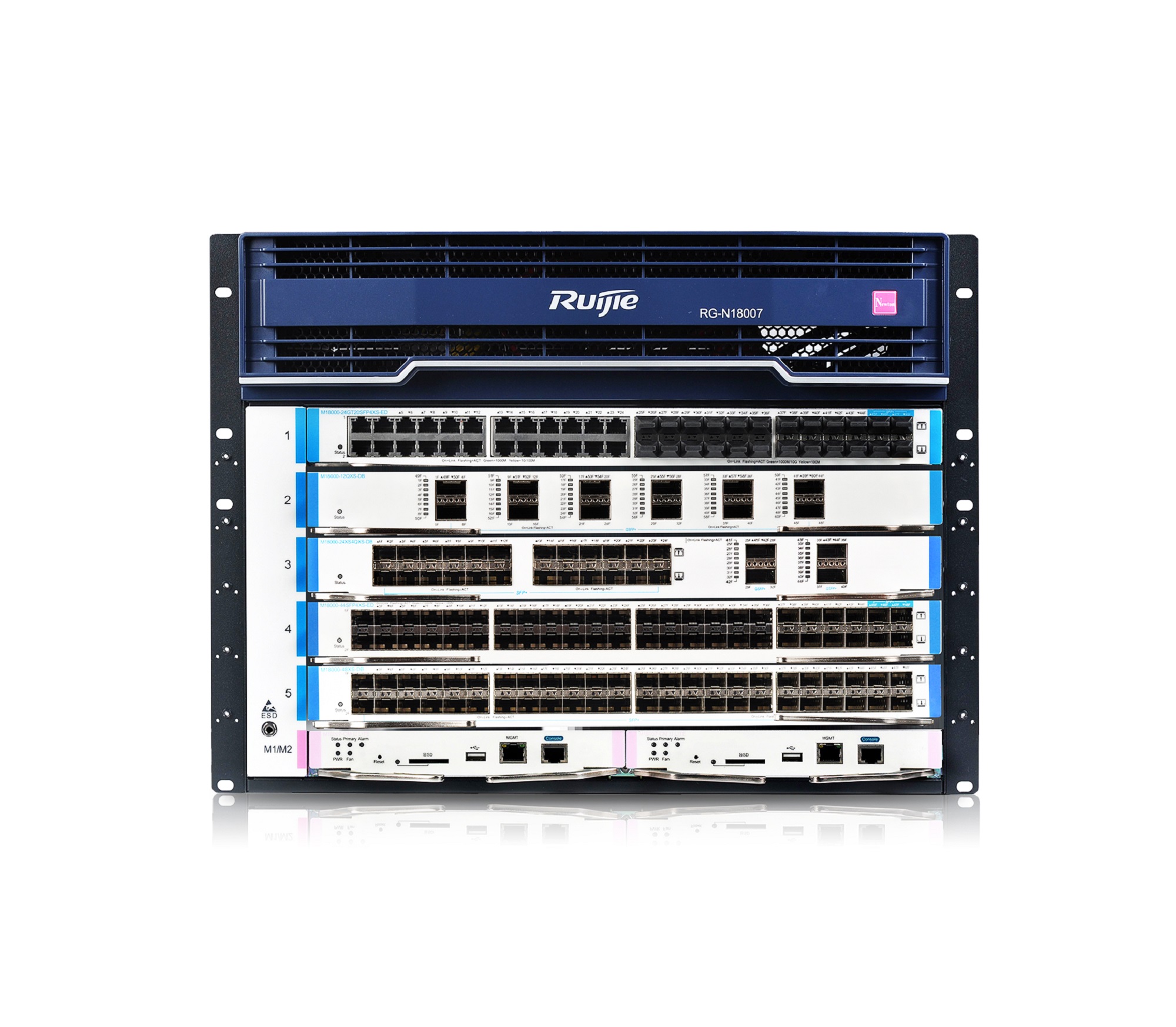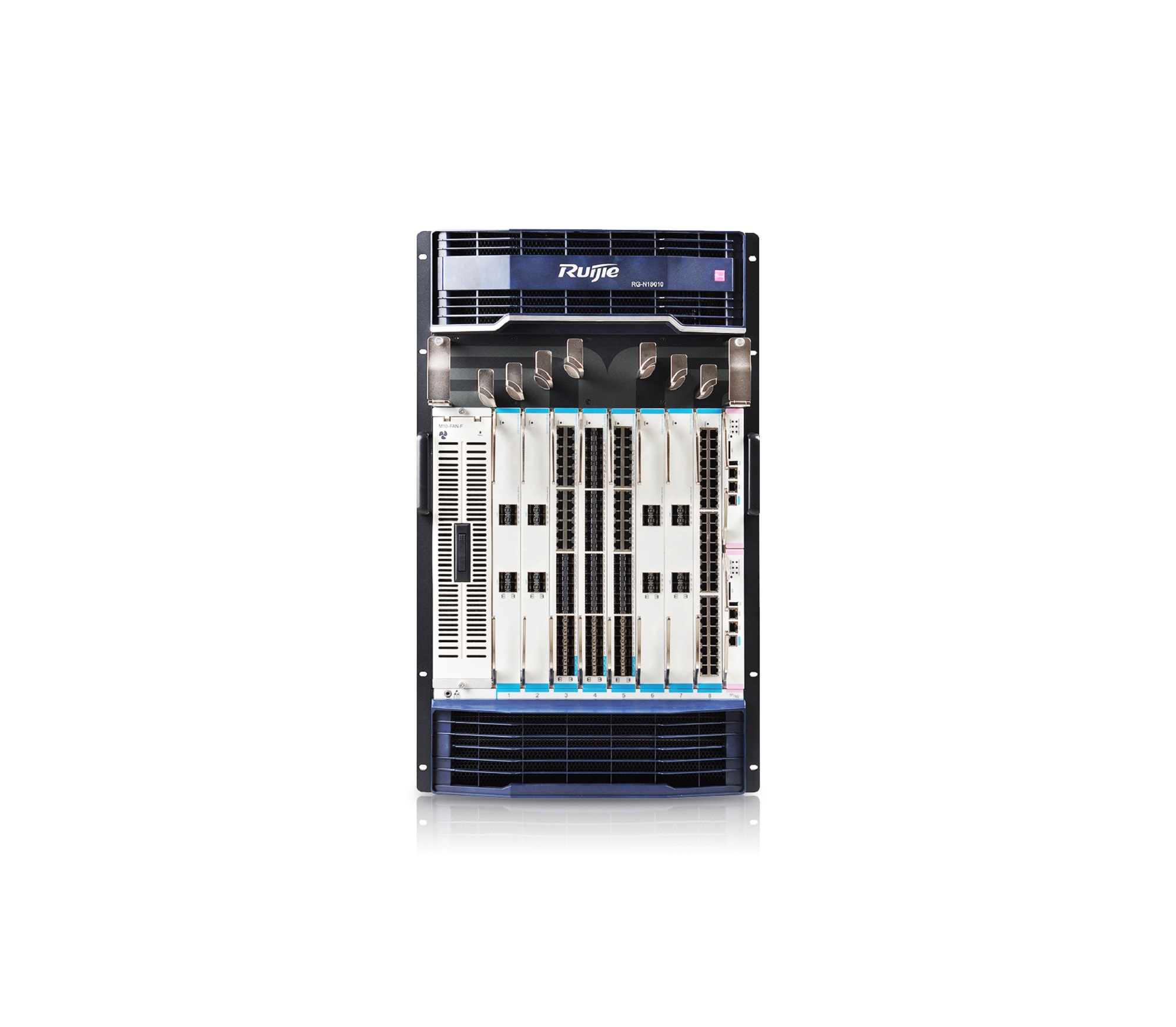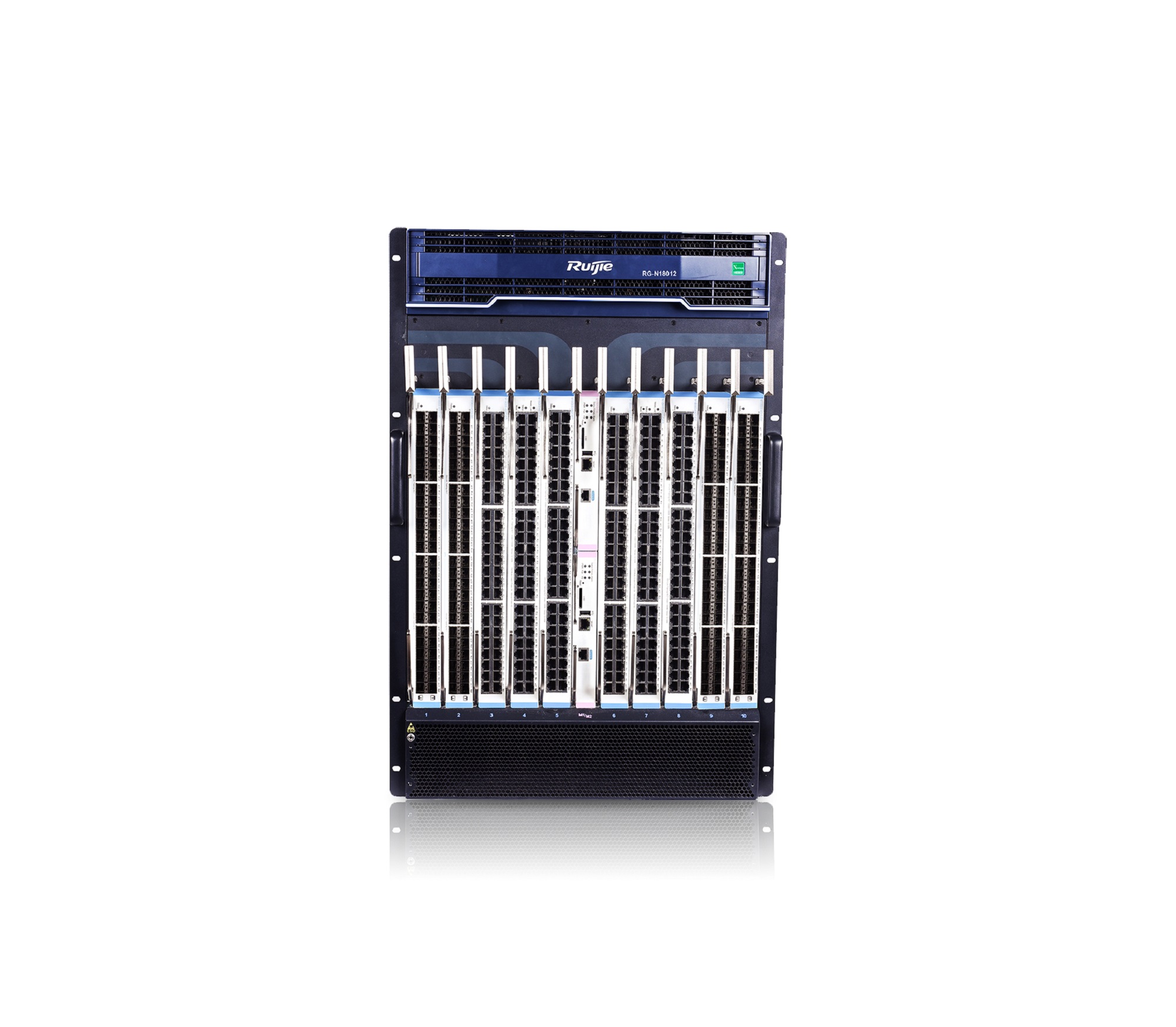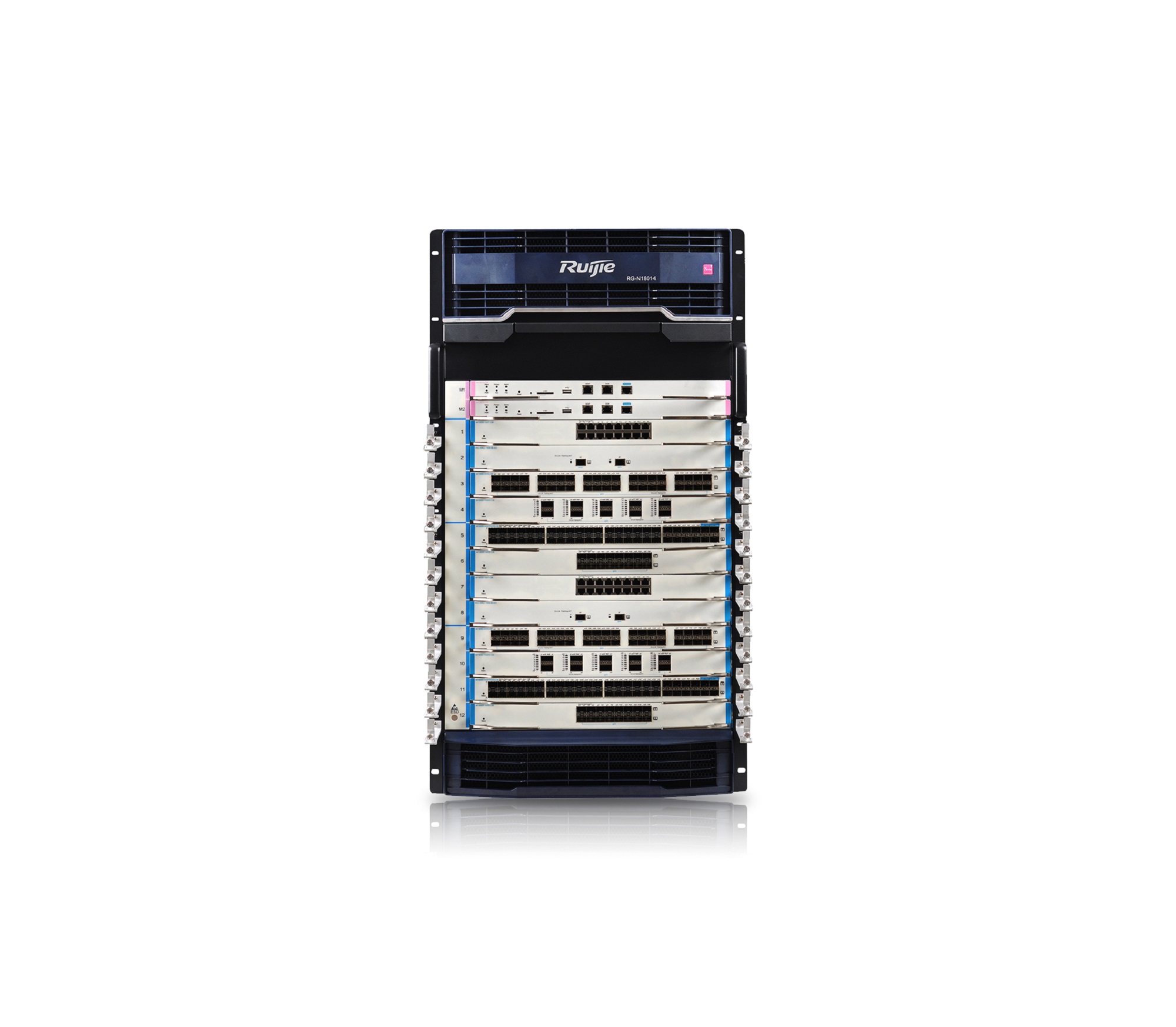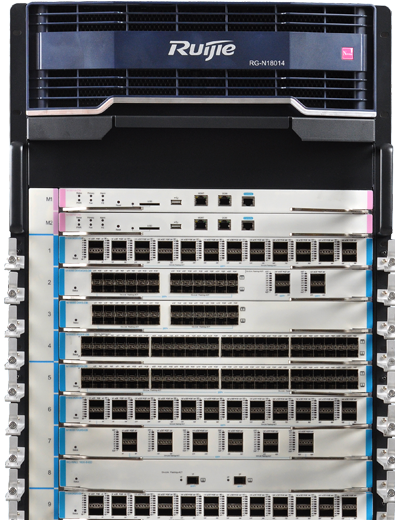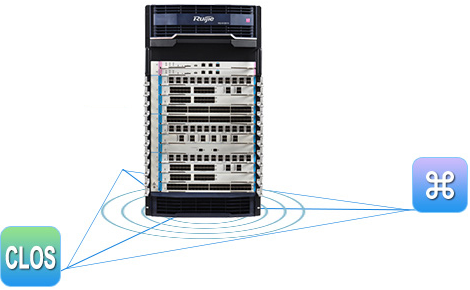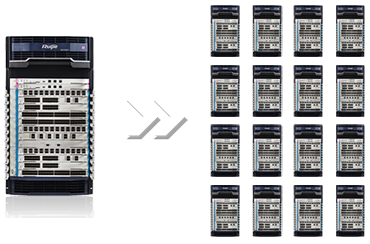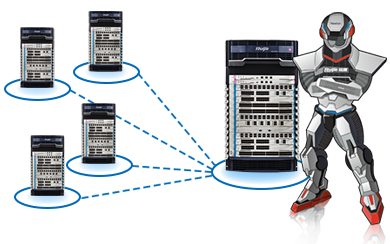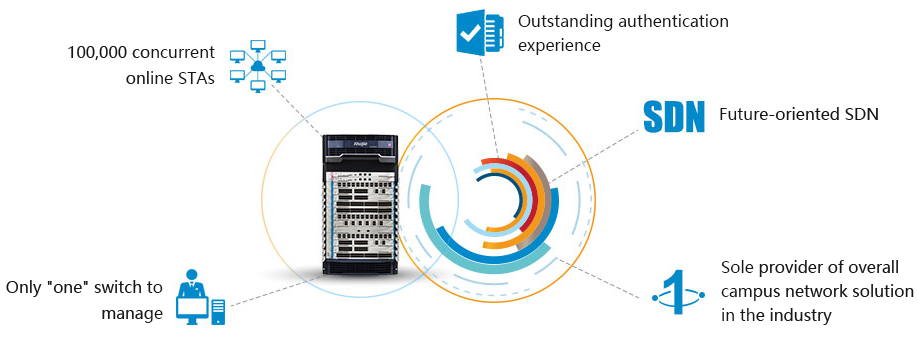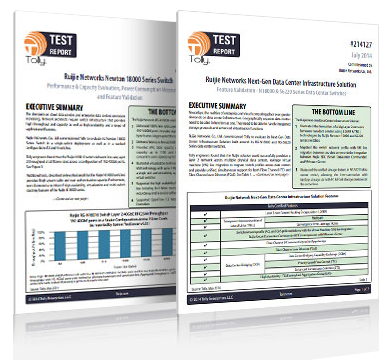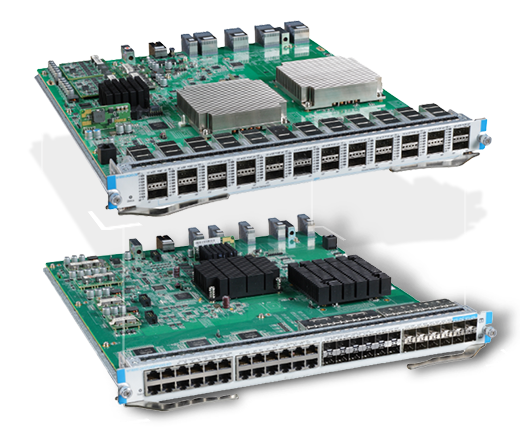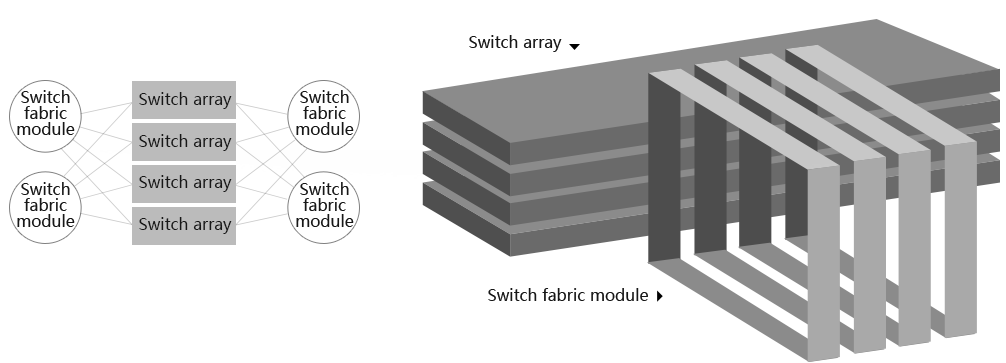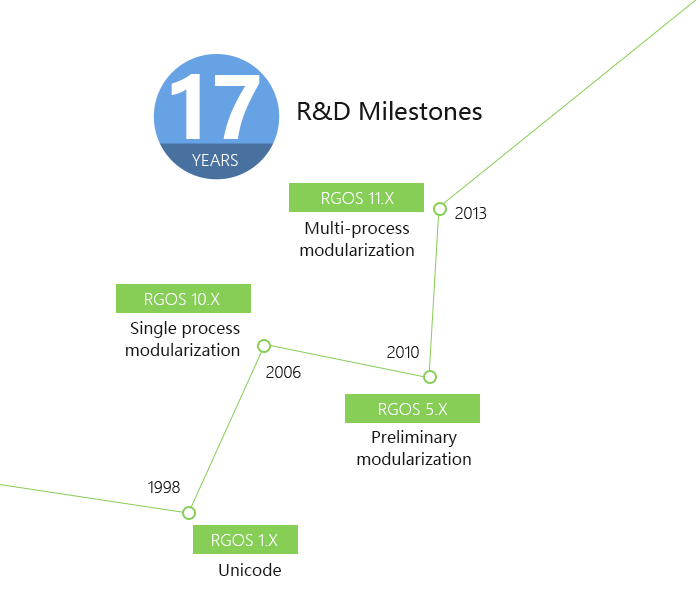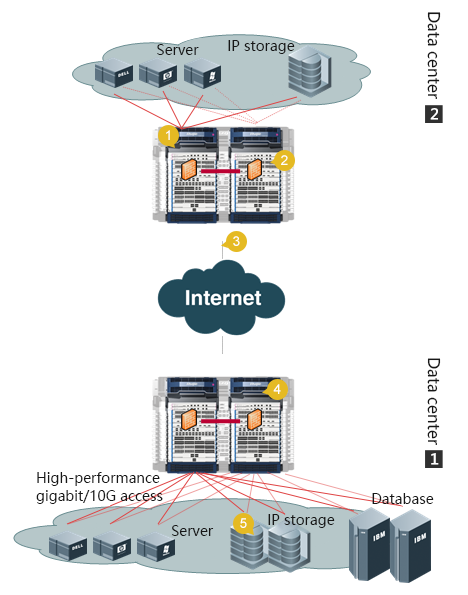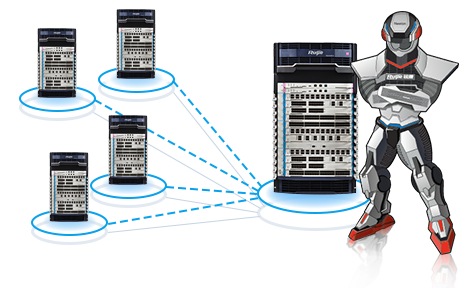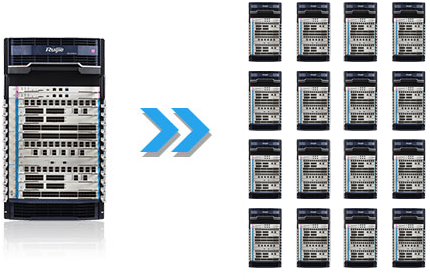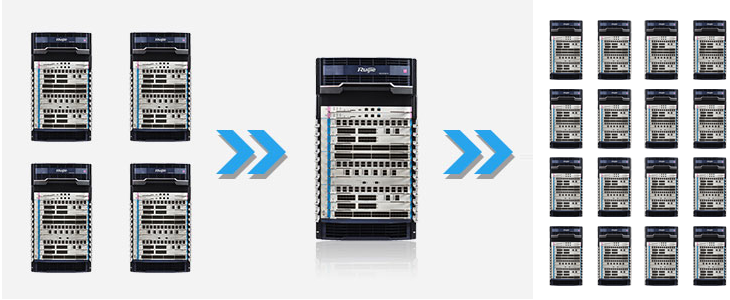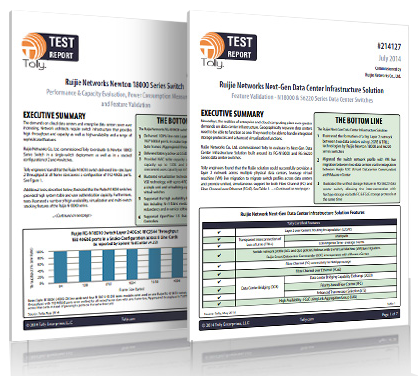Ultra-Simplified Solution for Campus Networks
To meet new challenges from evolving application environments, the market-leading Ruijie RG-N18000 Series delivers an innovative heterogeneous solution to power campus networks.
The RG-N18000 Series operates as the core of unified authentication and gateway in the ultra-simplified network solution. The switch achieves centralized authentication of wired and wireless networks on the core device via the built-in/external 802.1X/Portal authentication system. It can eliminate all the differences between access layer device performance and access mode. The RG-N18000 Series supports ≥170K ARP capacity, concurrent ≥60K IPv4/IPv6 dual stack devices with centralized authentication and authentication speed of 1000 devices per second.
Feature highlights supported by the respective sub-solution are illustrated in the figure below and described in the following sections.
Ruijie RG-N18000 Series can act as the core of unified authentication and gateway of the campus network to offer simplified network experience for users. As the centralized authentication gateway, the core device can achieve unified assignment of security policies. The access layer and aggregation layer are only responsible for Layer 2 forwarding. As the device maintenance is simpler, the performance capacity is no longer a bottleneck. The core layer device provides rich features, high performance and high reliability. The centralized management of network management policies facilitates security monitoring, network expansion and new service development. The Ruijie RG-N18000 Series supports multiple authentication modes such as Portal/ 802.1X. MAC. Different management modes and technologies will be deployed in different scenarios according to different user requirements of the campus network so as to provide targeted and high-availability technologies and solutions.
World’s Leading Cloud Network Core
●CLOS Non-blocking Architecture
Ruijie RG-N18000 Series deploys the advanced CLOS multi-plane, multi-stage architecture, which achieves complete separation of the forwarding and control planes. With independent fabric engines and control engines, it ensures all ports are running at full line rate in a non-blocking manner. The solution continues to strengthen bandwidth upgrade and business supporting capacities.
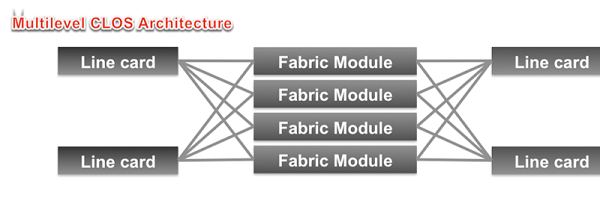

Advanced CLOS Architecture
Using an orthogonal design for service modules and fabric engines, the cross-board traffic is transmitted to the fabric engines through the orthogonal connector. Ruijie RG-N18000 Series achieves zero wiring for backplane with minimized transmission loss and signal degradation. It can also improve internal transmission efficiency of the switch.
●Scalable Performance for Future Development
Ruijie RG-N18000 Series single slot supports bandwidth of 2Tbps and it is scalable to 4Tbps. The series also supports high-density 40GE Ethernet ports to meet the evolving requirements of cloud computing data center in the coming decade.
The RG-N18000 Series is market leading in supporting line-rate packet forwarding. All boards including the one with the highest density support 64-byte packet forwarding at line rate. The switches thereby ensure high-speed forwarding with zero packet loss in large-scale data center.
The RG-N18000 Switches offer ultra-low latency up to 0.5μs to support high-speed transmission.
The series sustains a huge distributed cache design to achieve 200ms caching capacity. This feature fulfills spontaneous traffic requirements for data centers, high-performance network and so on.
Virtual Switch Unit 3.0 (VSU)
The series supports the Virtual Switch Unit 3.0 (VSU). The technology can virtualize multiple physical devices into one logical unit, which largely minimizes the number of network nodes and reduce administrator workload. Superior 50~200ms link failover ensures smooth and uninterrupted transmission of key services. The RG-N18000 Series supports cross-device link aggregation for easy double uplink to server/switch. The network can effectively maximize bandwidth investment return.
Virtual Switch Device (VSD)
Ruijie RG-N18000 Series delivers industry’s first 1:12 virtualization. One device can be virtualized into multiple virtual units. Hence, every virtual unit has a unique configuration management interface, independent hardware allocation (e.g. storage, TCAM and hardware forwarding table). All the features support restart with no effects on other virtual machines. Users can realize network resources allocation based on different needs. Resources of the core switch can hence be shared with other domains and users.
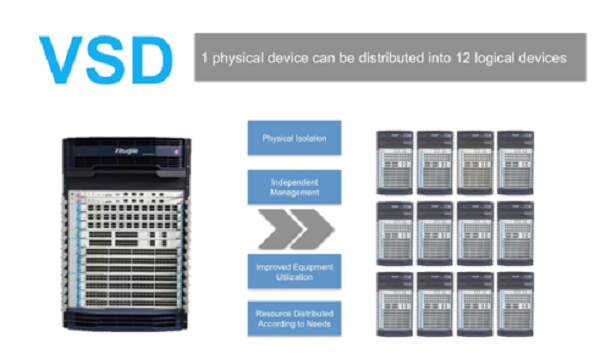

Benefits of 1-to-12 Virtualization
Layer 2 Generic Routing Encapsulation (L2-GRE)
With the international L2-GRE standard, the RG-N18000 switches break the geographical boundaries to achieve data center L2 communication. Data center resources at different locations can be centrally managed and allocated.
Software-Defined Network (SDN) & OpenFlow
Software Defined Networking is an emerging network architecture where network control is decoupled from forwarding and is directly programmable.
Core Concepts
●Decoupling of control plane and forwarding plane → hardware / network unified abstraction & virtualization, ease of independent development
●Centralized control & distributed forwarding → convert the distributed protocol problem into algorithm problem
●Open programming interface → softwarization of hardware, programmable devices, scalable network features & higher flexibility
Solution Components
●Hardware Switching Devices:
Ruijie Newton 18000 and S6000 series platforms will fully support OpenFlow modular hardware switching
●SDN Controller RG-IONC
Ruijie Intelligent OpenFlow Network System is a X86 hardware platform, which fully supports OpenFlow and SNMP2.0, providing the SDN control service modules below:
○Switch/host/topology management, L2/L3 communication
○Traffic editing/path calculation/static routing/DHCP
○MPLS L3 VPN service
○Virtual tenant network service
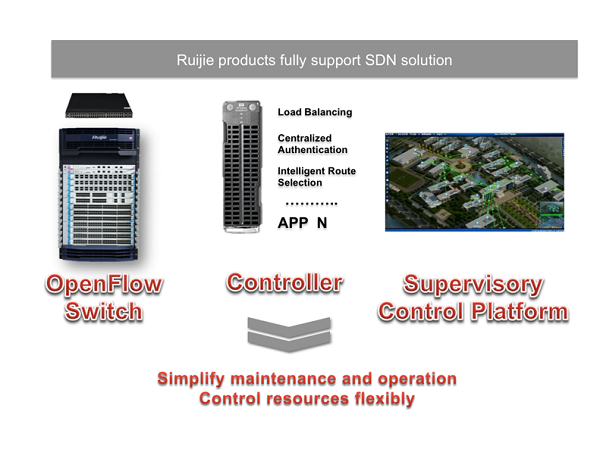

RG-N18000 Series Offers a Comprehensive SDN Solution
High Reliability & Energy-saving Design
Redundant design of the RG-N18000 Series key components delivers excellent protection: control engine 1+1 redundancy, fabric engine N+1 redundancy, fan N+M redundancy and power module N+M redundancy. All redundant components are hot-swappable to enhance the reliability and availability of the device to the maximum extent. Hot patch is also supported to enable online upgrade of devices.
Support GR for OSPF/IS-IS/BGP and BFD for VRRP/OSPF/BGP4/ISIS/ISISv6/MPLS/static routing to enable the fast fault detection mechanism of different protocols, which minimized the fault detection time to less than 50ms.
The RG-N18000 Series adopts 40nm chip technology, more energy efficient than the traditional 90nm and 65nm. Multi-core CPU supports dynamic power management with all fiber ports adopting non-PHY design to reduce power consumption. All Ethernet ports support the Energy-Efficient Ethernet (EEE) standard to save power under light load.
The internal system is designed for low voltage power supply with high-efficiency modular power to form a more efficient power supply system. The smart fan supports 256 speed modulations with precise temperature control, energy saving and noise control. The device can function at high temperature for a long period of time or in harsh environment for significant savings on energy consumption by air conditioning.
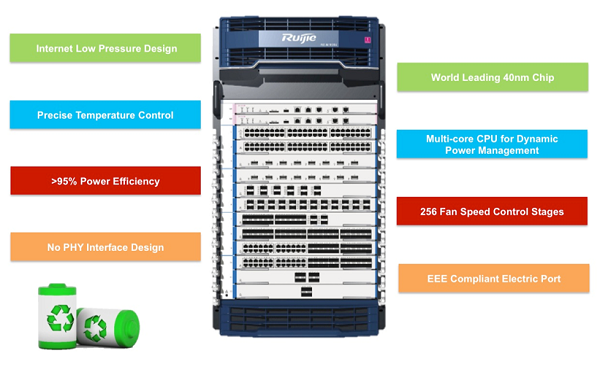

Abundant Energy Conservation Features
Multi-processing Modular Operating System
Since 1998, Ruijie has been investing on the R&D of modular operating system. The RG-N18000 software platform is designed based on the next-generation RGOS 11.X multi-processing modular operating system to integrate the service features such as loosely coupled firewall, wireless, IPFIX and authentication into a unified cloud network operating system. The RG-N18000 software platform also supports full virtualization and offers rich data center and campus network features. The key availability indicators such as multi-processing modules, process backup and hot patch have reached the industry-leading level.
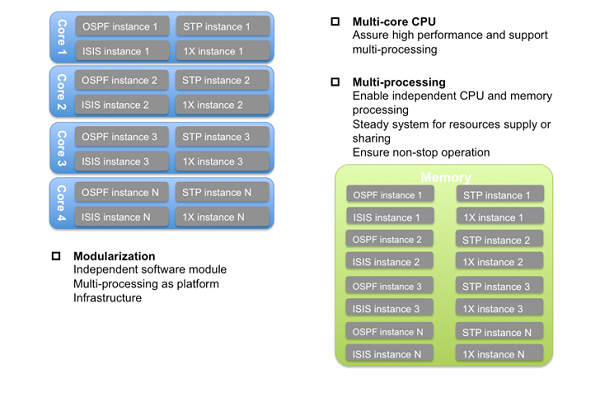

Architecture and Benefits of Multi-process Modular Operating System
